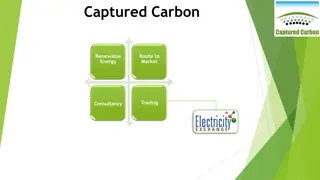
Disjoint Set Union: Path Queries and Node Connections
Learn about Disjoint Set Union (DSU) data structure for handling queries like adding edges between nodes and checking path existence. Understand how nodes are connected and parent nodes are determined using DSU.
Uploaded on | 1 Views
Download Presentation

Please find below an Image/Link to download the presentation.
The content on the website is provided AS IS for your information and personal use only. It may not be sold, licensed, or shared on other websites without obtaining consent from the author. If you encounter any issues during the download, it is possible that the publisher has removed the file from their server.
You are allowed to download the files provided on this website for personal or commercial use, subject to the condition that they are used lawfully. All files are the property of their respective owners.
The content on the website is provided AS IS for your information and personal use only. It may not be sold, licensed, or shared on other websites without obtaining consent from the author.
E N D
Presentation Transcript
Motivation We need to handle 2 type of queries- 1) Add edge between 2 nodes 2) Check if there is a path between two nodes. (Are 1 nodes connected)
Check if path between 1 and 4 -> NO. Now Add an edge between 2 and 3
DSU... Let say there are n Nodes Define an array Parent[] Value of Parent of index i is i initially
How to add edge between two elements? Initially- Parent array - index 1 2 Parent [ ] 1 2
After adding an edge- Now- Parent array - index 1 2 Parent [ ] 2 2 Change Parent of 1. Now Parent is 2
Index - 1 5 2 3 4 Parent- 1 5 2 3 4
Add edge between 4-5 Index - 1 4 2 3 5 Parent- 1 4 2 3 4
Add edge between 1-4 Index - 1 4 2 3 5 Parent- 1 1 2 3 4
Add edge between 2-3 Index - 1 4 2 3 5 Parent- 1 1 2 2 4
Add edge between 5 and 3 Index - 1 4 2 3 5 Parent- 1 1 2 2 4
5 calls 4 asking for his SUPER PARENT NODE. 1 is SUPER PARENT 4 calls 1 asking for his SUPER PARENT NODE. Who is SUPER PARENT? 1 says I am SUPER PARENT. So it returns 1. Returns 1 4 also returns value of 1 Who is SUPER PARENT? Index - 1 4 2 Returns 1 3 5 Parent- 1 1 2 2 4
What we get is- Super parent of 5 is 1 Super Parent of 3 is 2 NOW ADD EDGE BETWEEN 1-2 Index - 1 4 2 3 5 Parent- 1 1
We need 2 functions 1) Find (int node) -> to find the super parent of a node. 1) Union(int a,int b)-> to add edge between two nodes.
Solution- choose new super parent on basis of size of component. Intially all nodes has size 1. Combine two nodes on basis of size only.
Initial conditon- Every node is itself super parent And size of component is 1.
Optimisation 2- Path Compression Returns 1 Why not all the nodes update themselves with Returns 1 Parent [node] = 1 ??? Returns 1 Returns 1
So finally it should look like this. Index - 1 2 3 4 5 Parent- 1 1 1 1 1
Complexity- Complexity is O(n). Because once u traversed over a unnecessary edge . U will not go over it again. In actual complexity is O(n*Alpha(n)) where Alpha(n) is reverse Ackermann function.
Qno.s https://www.spoj.com/problems/NITTROAD/ https://codeforces.com/problemset/problem/371/D https://www.spoj.com/problems/KOICOST/ (Do it urself)
First question- Basically says to calculate no. of different connected components. Now add all the edges. Now check how many different super parents are there. As eac super Parent denotes its own Component. (You can use for set for keeping unique entries or a simple array can also work).



